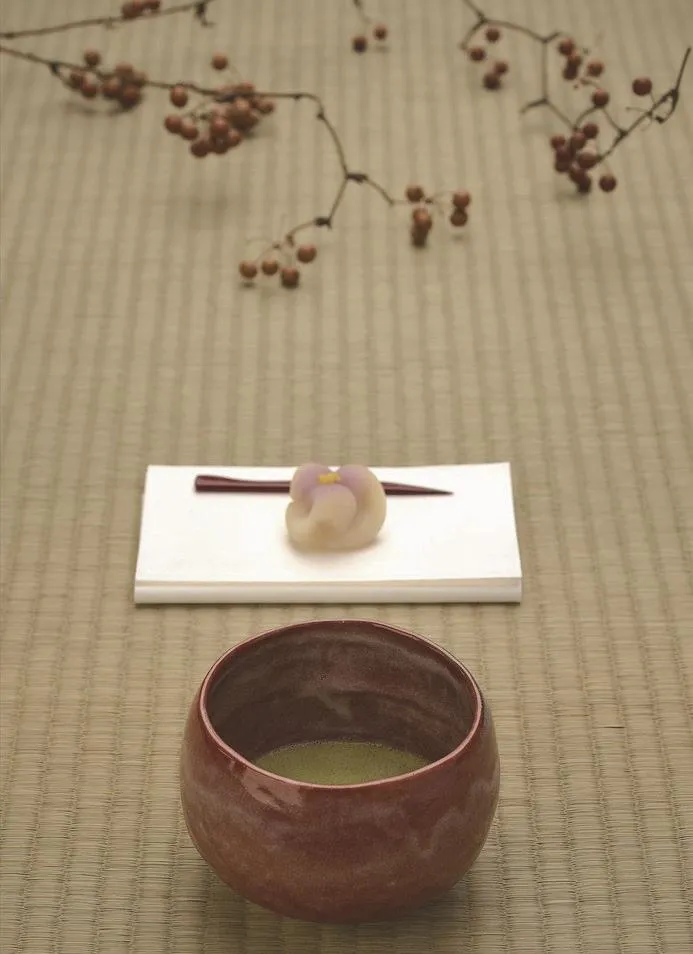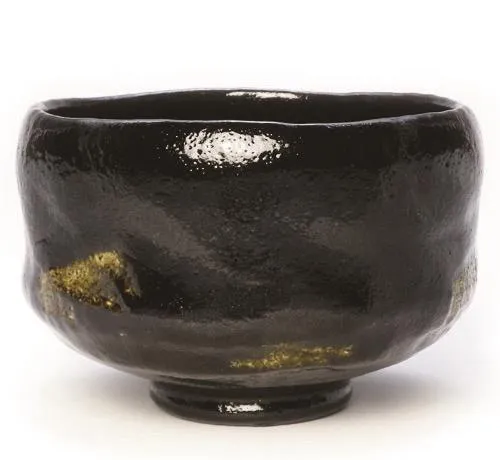茶禅一味 道法自然
2017-06-15五花肉
茶禅一味 道法自然
Integration of Zen and Tea in Natural Way
文/五花肉
在日本文化中,禅具有“不匀称、简朴、枯高、自然、幽玄、脱俗、静寂”七种艺术特性。被誉为日本茶道“开山之祖”的村田珠光,将这种禅宗思想引入茶事,进而演化出“四谛七则”“非对称”等茶道标准,造就了“茶禅一味”的独特的茶道文化。
In Japanese culture, Zen has seven artistic characteristics, namely asymmetry, simplicity, austerity, nature, mystery, spirituality and quietness. Murata Juko, forerunner of the Japanese Teaism, introduced Zen into tea af f air, which developed a series of standards for teaism including "four truths and seven rules” and “asymmetry", creating a unique teaism culture of "integration of Zen and tea".

追求四谛的精神核心
Spiritual Cores of Four Truths
日本茶道追求的“和”“敬”“清”“寂”,被称为茶道四谛,既是日本茶道的精神核心,也被视为必须遵循的茶道法则和伦理规范。
The four truths of Japanese Teaism are harmony, respect, purity and tranquility, which are recognized as the spiritual cores of Japanese Teaism, and viewed as the teaism rules and ethical norms.
以“敬”为例,最初的日本茶室入口,是根据客人的身份分别设置贵宾门和小门,经过四谛的规范,全部统一成“不论身份地位一律自由出入”的小门;对饮时,主人需以左手掌托碗,右手五指轻转碗沿,将碗上花纹图案对向客人,跪地后举茶齐眉恭请宾客,宾客接茶后再将碗上花纹图案转回至主人方向,举碗至额以示感谢。凡此种种,都体现了人与人的平等。
Take "respect" as an example, the primitive entrance of Japanese tea rooms were set up VIP entrance and common entrance according to the identity of the guests. After following the four truths, all the entrances were unified into small entrances which were free access regardless of identity or status. In tea affairs, the host should hold the bowl with left hand, and rotate the edge of the bowl lightly with right hand until the f l oral designs toward the guests, then offer the tea to the guest while raising the tea to the eyebrow level in kneeling. The guest needs to rotate the floral designs back toward the host after receiving the tea, and raises the bowl to the forehead to show appreciation. All these steps demonstrate interpersonal equality.
遵循七则的茶道体系
Seven Rules of Teaism System
日本茶道,对环境、技艺、礼仪也有一整
套严格的程序和标准,主要包括“点茶要温度适宜,放炭要恰到好处,茶汤要冬暖夏凉,鲜花要妙趣插成,仪式须提前准备,须常备雨具,待客要以心相待”等,统称为七则。
Japanese teaism has a series of strict procedures and standards for environment, skill and etiquette. It can be concluded as seven rules, namely making tea at a proper temperature; laying the charcoal precisely; warmth in winter and coolness in summer of tea; arranging the flowers elaborately; preparation in advance; getting prepared for raining; and entertaining guests attentively.
比如:茶室面积多在9m2左右,小于此称小间,大于此称广间;放炭时,要选用精致洁净的炭精,撒灰的次数、动作与方位都有明确的标准;仪式主要包括点茶、煮茶、冲茶和献茶;品茶则分为轮饮和单饮,前者是宾客轮流品尝一碗茶,后者则是每人一碗茶。仪式结束后,宾客鞠躬告辞,主人跪坐门侧送客。



For instance, most tea rooms are in an area of 9 square meters. The one smaller than 9 square meters will be called “small room”, while the one bigger than 9 square meters will be called “large room”; the charcoal shouldbe pure and delicate. Besides, the frequency, movement and direction of the dusting also have specific standards. The ceremony includes whisking tea, boiling tea, brewing tea and offering tea. Tea-tasting can be divided into “round drink” and “sole drink”. The former refers to a bowl of tea that is tasted by guests one by one, while the latter refers to a single bowl of tea drunk by one person. After the ceremony, the guests bow and leave, and the host sit on heels by side of the door and see the guests out.
独特“非对称”审美标准
Unique Asymmetrical Aesthetical Standard
以不平衡和非对称为美,是日本茶道独有的审美标准。最具代表性的茶陶“乐烧”,就以姿态不正者为上品。
Taking imbalance and asymmetry as beauty is the unique aesthetical standard for Japanese teaism. The most representative tea pottery "Raku Ware" is known as the top grade pottery for its irregular shape.
根据釉色不同,“乐烧”主要分为“赤乐”和“黑乐”,坯体规定手工捏制,掺入10%~20%的熟料,锻烧至800℃,以淋釉、浸釉、喷釉或涂彩等方式上釉,在造型、色彩上追求不平衡和非对称,有的碗口圆润起伏、碗身凹凸不平,有的上釉薄厚不均、配色内外不一,无处不彰显“非对称”的审美情趣。
According to the glaze color, Raku is divided into "Red Raku" and "Black Raku". The body must be handmade, mixed with clinkers at the percentage from 10% to 20%, and be calcinated up to 800℃. The glazing is conducted in ways of pouring, soaking, sprinkling and shading. In terms of shape and color, Raku pursues irregularity and asymmetry. Some have wavy bowl lip and unsmooth body while some have uneven glazes and dif f erent colors inside and outside. All these characteristics ref l ect the aesthetic sense of "asymmetry”.


结 语
Conclusion
日本茶道,内始于禅,外形于茶,在漫长的历史发展进程中,两者彼此渗入、相互影响,在标准理念的潜移默化下,最终融合而成“茶禅一味”的新境界。
Japanese teaism originates from Zen and appears in tea. In the prolong history of development, Zen and tea inf i ltrate and inf l uence each other, and f i nally integrate into a new realm "integration of Zen and tea" under the subtle inf l uence of standards concept.
(支持单位:上海市质量和标准化研究院)
